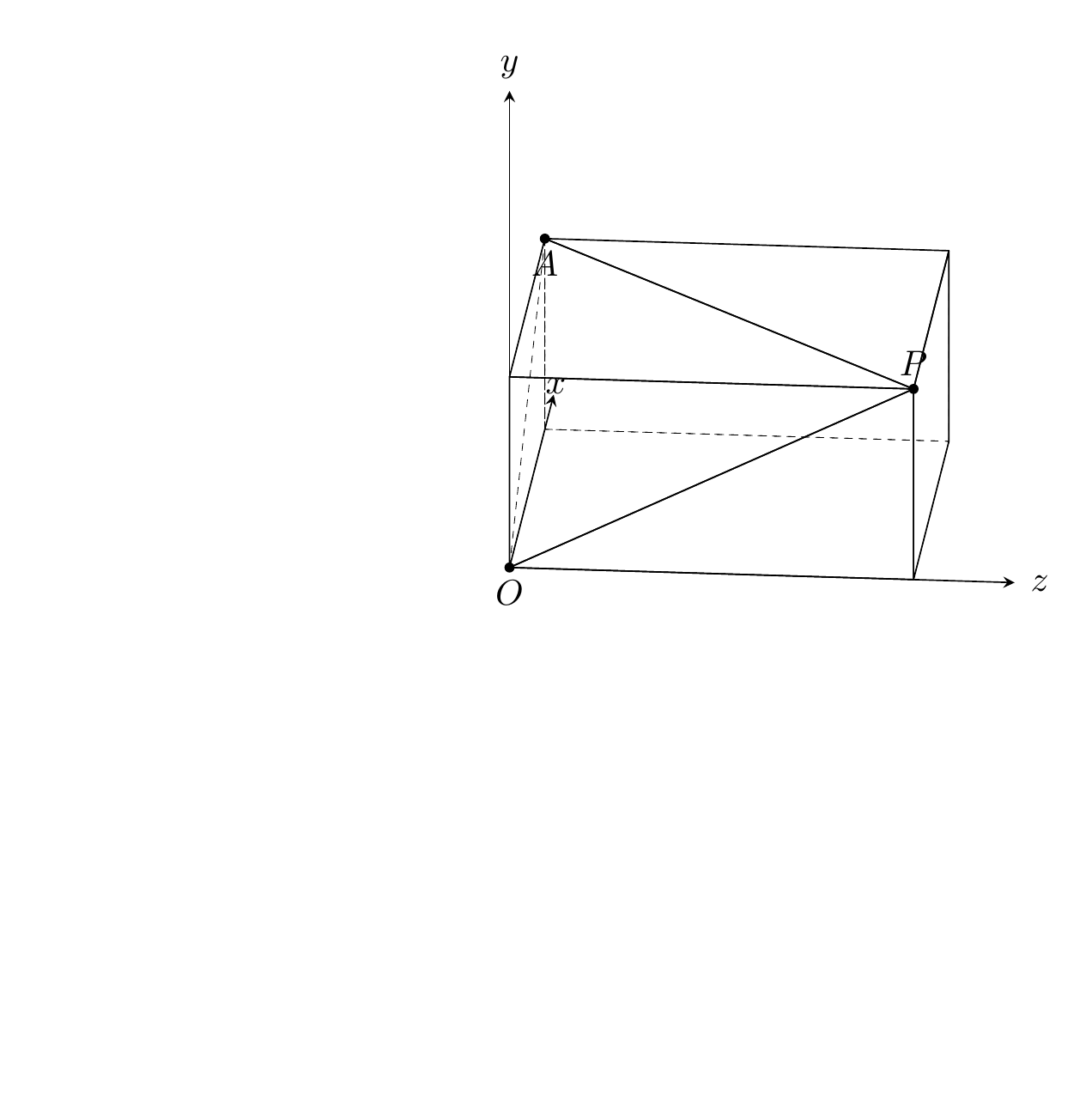I think the OP may want something like
```
\documentclass[tikz,border=3mm]{standalone}
\usetikzlibrary{calc,3dtools}% https://github.com/marmotghost/tikz-3dtools
\begin{document}
\foreach \Angle in {5,15,...,355}
{
\begin{tikzpicture}[line cap=round,line join=round,
c/.style={circle,fill,inner sep=1pt},
3d/install view={phi=\Angle,theta=70},same bounding box=A]
\path (1,0,0) coordinate (ez) (0,1,0) coordinate (ex)
(0,0,1) coordinate (ey);
\begin{scope}[x={(ex)},y={(ey)},z={(ez)}]
\draw[-stealth] (0,0,0) -- (5,0,0) node[pos=1.05]{$x$};
\draw[-stealth] (0,0,0) -- (0,5,0) node[pos=1.05]{$y$};
\draw[-stealth] (0,0,0) -- (0,0,5) node[pos=1.05]{$z$};
\path
(0,0,0) coordinate (O)
(4,0,0) coordinate (B)
(4,2,0) coordinate (A)
(0,2,0) coordinate (D)
(0,0,4) coordinate (O')
(4,0,4) coordinate (B')
(4,2,4) coordinate (A')
(0,2,4) coordinate (P)
(2,1,2) coordinate (T);
\tikzset{3d/polyhedron/.cd,O={(T)},fore/.append style={fill=none},
back/.append style={3d/hidden},
draw face with corners={{(O)},{(B)},{(A)},{(D)}},
draw face with corners={{(A)},{(B)},{(B')},{(A')}},
draw face with corners={{(O)},{(D)},{(P)}},draw face with corners={{(O)},{(O')},{(P)}},
draw face with corners={{(A')},{(B')},{(O')},{(P)}},
draw face with corners={{(A)},{(D)},{(P)}},
draw face with corners={{(A)},{(A')},{(P)}},
draw face with corners={{(O)},{(B)},{(B')},{(O')}}}
\path foreach \p/\g in {A/-90,O/-90,P/90}{(\p)node[c]{}+(\g:2.5mm) node{$\p$}};
\draw[3d/hidden] (O) -- (A) ;
\end{scope}
\end{tikzpicture}}
\end{document}
```
